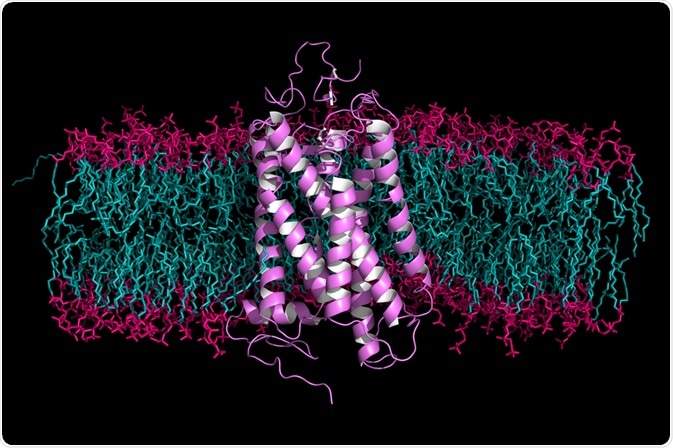An emerging area in the field of proteomics is targeted proteomics, a technique concerned with the quantification of specific proteins. This method has high accuracy, reproducibility, and multiplexing capabilities.
 petarg | Shutterstock
petarg | Shutterstock
What is proteome?
The proteome of the cell genome is more insightful compared to its transcriptome as proteins directly determine and alter cellular function. Post‐translational modification of existing proteins, increased abundance or allosterically modulated protein conformations have been tied to complex diseases, including Alzheimer’s, cancer, and diabetes. Existing methods of quantifying these changes have limitations due to a lack of specificity and variation in the procedure. Targeted proteomics presents a method to overcome these drawbacks.
Designing and performing targeted proteomics
Shotgun proteomics
Traditional methods to quantify protein interactions have used the shotgun proteomics approach, involving profiling the protein complement of numerous samples in an unbiased manner to compare the differential abundance of proteins. However, the exact shotgun method chosen depends on the data. Targeted proteomics is a refined approach to the shotgun or discovery method.
Another method used to quantify proteins is data‐independent acquisition (DIA). This method combines discovery proteomics with selected reaction monitoring (SRM). SRM is performed in a mass spectrometer which allows targeted measurement of a protein to occur as a selected peptide or fragment can be followed.
Tandem mass spectrometry (MS/MS) is the employed method of SRM. MS/MS separates proteins firstly by their mass-to-charge ratio, fragments the proteins and detects the resultant ions by a second mass spectrometer.
Bottom-up approach
In this method, initial measurements are acquired from a protein of interest which has been proteolytically cleaved into its constituent peptides. This yields a series of tryptic peptides which are then applied to a liquid chromatography (LC) column. Here, most proteins bind to the hydrophobic stationary phase (column). As the mobile phase becomes decreasingly polar, detachment and elution of the peptides occurs, providing the retention time for each peptide.
From this, the peptides are sequentially introduced into the mass spectrometer. Electron spray ionization (ESI) is used to ionize the peptides so that they carry a single positive charge and progress through the first quadrupole (Q1).
Fragmentation occurs through the process of collusion‐induced dissociation to produce a set of fragment ions at the second quadrupole (Q2). From these fragmented ions, a further selection event takes places at the third quadrupole (Q3) and subsequently detected by a mass analyzer.
Parallel reaction monitoring (PRM)
Parallel reaction monitoring (PRM) is another method that is performed on a high‐resolution hybrid instrument which allows all possible ions to be monitored by the mass analyzer. The area integrated under the fragment ion peaks is a measurement of the fragment ion abundance which can be used to determine the mass of the unique precursor ion, and subsequently, the protein.
The competitive edge of targeted proteomics
In the clinical setting, targeted proteomics allows the development of personalized medicine. For example, stratification of patients is possible with targeted proteomics as responders and non-responders can be grouped for treatment.
Additionally, a pre-defined set of biomarker protein panel can be developed for screening of diseases (including their stage) which facilitates early diagnosis and allows epidemic management within a population.
In order to make targeted proteomics an integral part of the research, it needs to be more accessible. Further, efforts are required to build the infrastructure to support data analysis, instrumentation, and expertise. Automation is desirable at all stages from sample processing, instrument handling, and data analysis.
Sources
- Anjali Arora & Kumaravel Somasundaram. Targeted Proteomics Comes to the Benchside and the Bedside: Is it Ready for Us? Bioessays. 2019. doi.org/10.1002/bies.201800042
- Eva Borràs & Eduard Sabidó. 2017. What is targeted proteomics? A concise revision of targeted acquisition and targeted data analysis in mass spectrometry. Proteomics. doi.org/10.1002/pmic.201700180
- Nagib Ahsanab, Shyama Prasad Raoc, Philip A.Gruppusode, Bharat Ramratnamab, Arthur R. Salomonbe. Targeted proteomics: Current status and future perspectives for quantification of food allergens. 2016. Journal of Proteomics. 143. pp.15-23. doi.org/10.1016/j.jprot.2016.04.018
Further Reading
Last Updated: Apr 24, 2019